Best
Beginner
Bassoon
-
Overall: 8/10
-
Best Feature: German bell with an attractive synthetic-ivory ring.
-
TedScore™: 8/10
Best
Overall Bassoon
with
Nickel-plated Keys Durable, Beginner Bassoon
-
Overall: 9/10
-
Best Feature: German bell with an attractive synthetic-ivory ring.
-
TedScore™: 9/10
Best
Beginner Bass
Clarinet
-
Overall: 8/10
-
Best Feature: Resonite ABS body and hand-hammered bell
-
TedScore™: 8/10
Exploring woodwind instruments is like opening a present, and I’m excited to talk about Bassoon Vs Bass Clarinet—a musical face-off that’s sure to delight! I’ll reveal some juicy details to help you understand this musical match-up.
As a musician, I love the fascinating complexity of the bassoon and the smooth flexibility of the bass clarinet—they’re like the perfect pair for the lower notes in the orchestra.

This article gives you the lowdown on these two amazing woodwinds so you can pick your favorite for your musical journey.
Make sure you don’t miss out on learning all about the unique features of these two prominent instruments.
Keep reading to discover which one you might fall in love with and want to include in your next musical experience!
Overview and Characteristics
In exploring the bassoon and bass clarinet, I’m venturing into a delightful woodwind territory rich with unique sounds and features.
Let me unpack their charm and distinctive characteristics contributing to the music world.
Physical Structure and Components
The bass clarinet typically stands about 26 inches tall—a beauty with a curved metal neck and a cozy bell at the end.
When assembled, the bassoon stretches up to 8 feet. Its imposing length and intricate system of keys and holes demand attention.
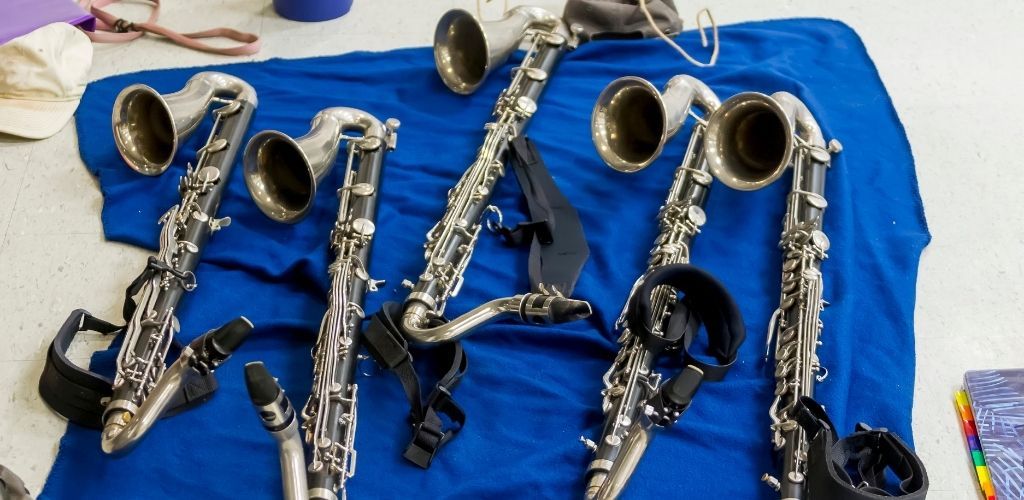
- Length: Approximately 26 inches
- Body: African Blackwood
- Components: Curved metal neck, speaker key, bell, register keys

- Length: Up to 8 feet
- Body: Mostly maple wood
- Components: Double bore, numerous keys, and holes, bell
Sound and Range
The bass clarinet’s voice hums with a dark, round tone that provides a mellow backdrop to any ensemble. In contrast, bassoon sings with a distinctive, almost nasal timbre; it’s remarkably versatile, handling both lyrical melodies and complex harmonies with aplomb.
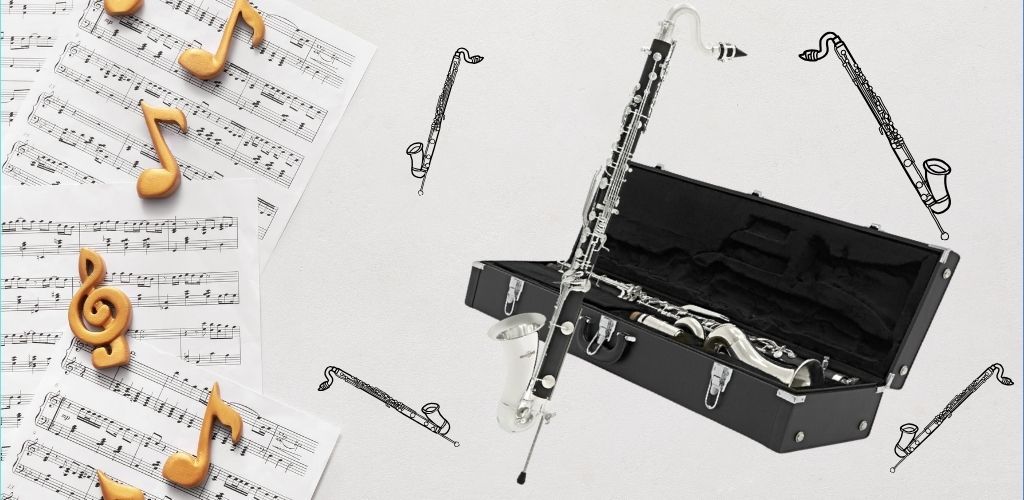
- Up to an octave below the Bb soprano clarinet.
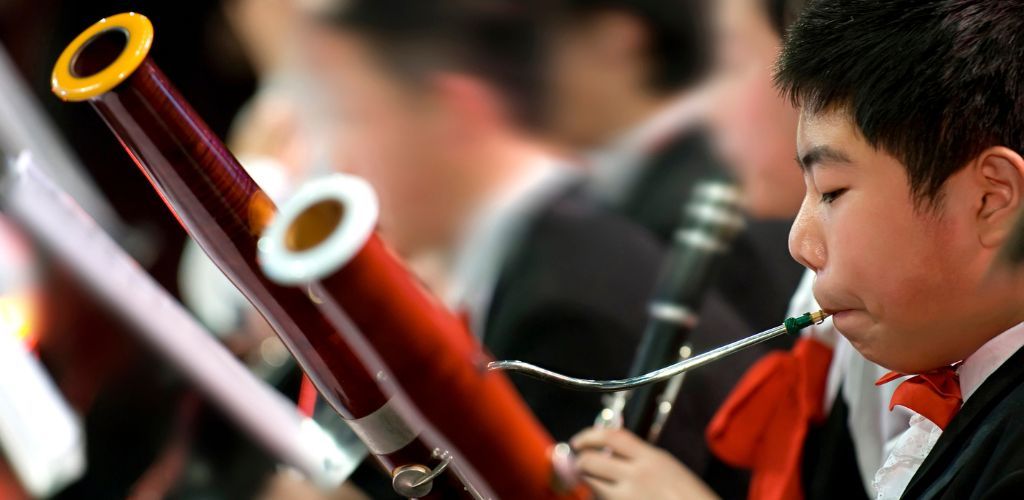
- Known for its wide range and ability to play the lowest notes in the woodwind section.
Reeds and Sound Production
I need to mention the reeds – the real magicians of our sound production. I, proudly sporting a single reed attached to my mouthpiece, find it simpler to manage and ideal for those starting.
The bassoon has a double reed instrument, offering a universe of rich, resonant tones, albeit with a bit more challenge.

- Single reed
- Secured by a ligature
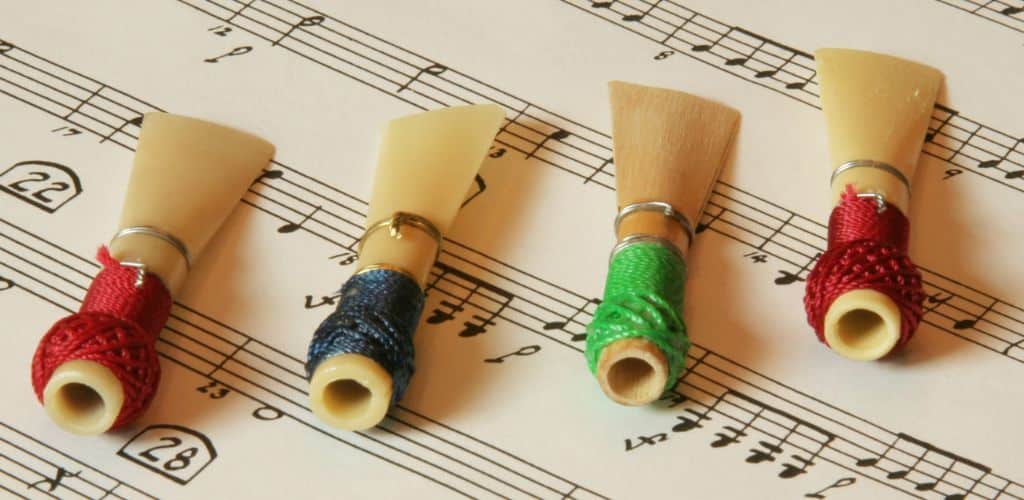
- Double reed
- Requires precise embouchure
While the contrabass clarinet has deep, resonant tones that add a rich foundation to the ensemble, while the intermediate bassoon offers budding players a stepping stone to explore the instrument’s expressive capabilities.
Comparison and Practical Considerations
When you’re torn between the bassoon and bass clarinet, it’s all about the finer details, like unique characteristics, practicality for players, and keeping them in tip-top shape.
Let’s understand what sets these two instruments apart and what you must consider.
Choice for Musicians and Students
Models and Cost: Bass clarinets and bassoons come in various models, from student to professional. Beginners might opt for a less expensive, used instrument, while a pro will likely go for a top-notch new model.
Sound Difference: The bass clarinet delivers a warm, mellow vibe — think of a bass voice in a choir. Bassoons, with their distinct, reedy sound, can be a bit more challenging to master, but they have that unique nasal quality that’s irreplaceable in orchestral settings.
Maintenance and Care
Daily Upkeep: Taking care of my bass clarinet is part of the routine, and the same goes for the bassoon. Both instruments need regular cleaning and gentle handling to prevent damage to those sensitive keys.
Damage Prevention: The construction of these instruments is rather sophisticated, so avoiding damage is critical. With the bass clarinet’s adjustable peg and bassoon’s delicate reed, I always recommend handling them carefully, especially when it’s time to assemble or place them in their cases.

Playing Technique and Learning
It’s worth noting that the bassoon and bass clarinet are splendid members of the woodwind family. They have unique playing techniques that I’ll guide you through.
Fingering Systems and Clefs
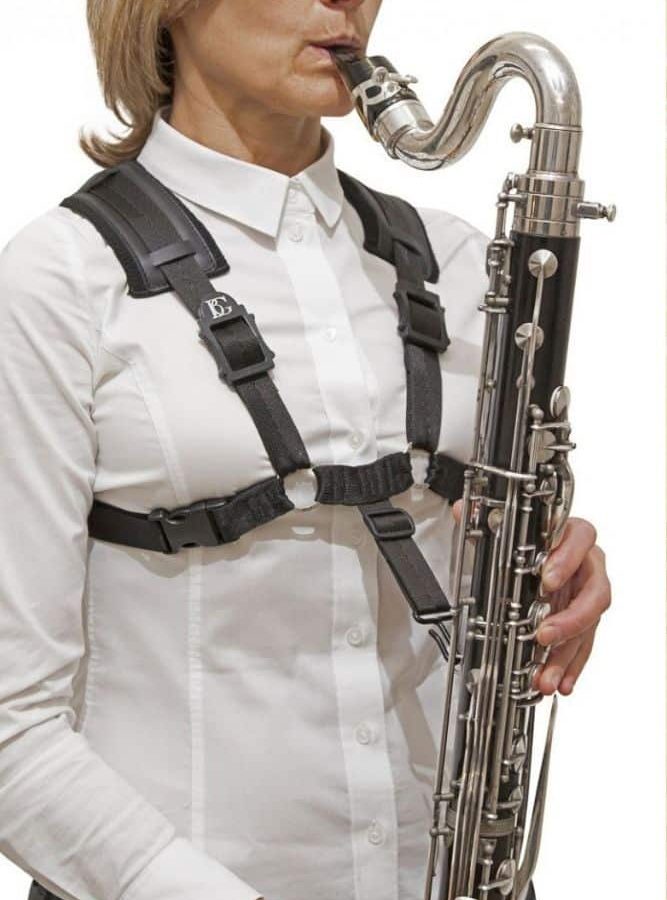
One of the first hurdles I encountered when learning these woodwind charmers was their diverging fingering systems and the clefs in which they are notated.
Much like its soprano relative, the bass clarinet uses the treble clef, while my bassoon friends dance around the notes in the bass clef.
Mastering the fingerings is like learning two distinct languages, but it’s doable with patience.
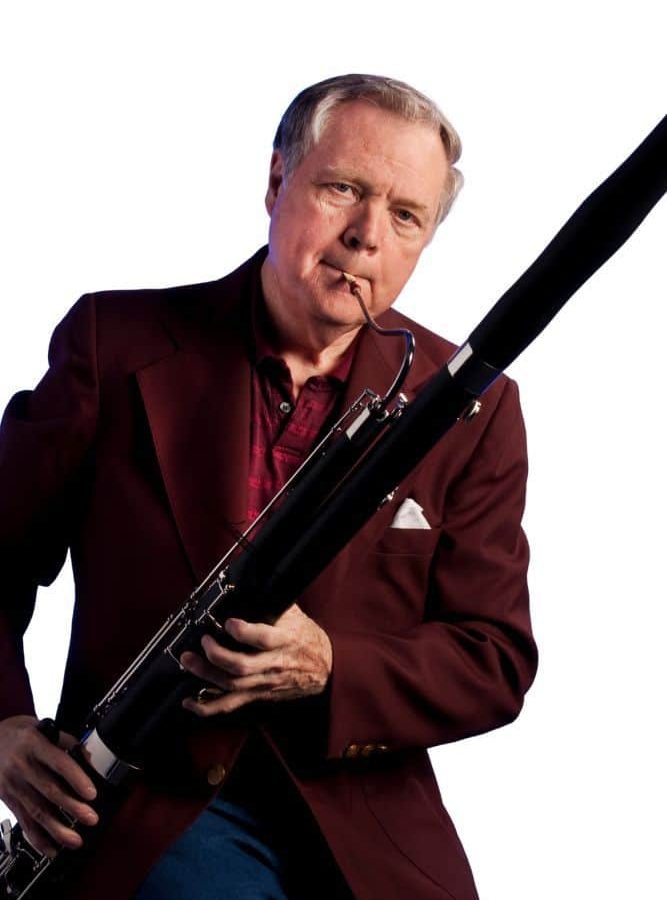
Trusted Bassoon Brands
Fox Renard Model 222 Student Bassoon - Full German System with High D Key
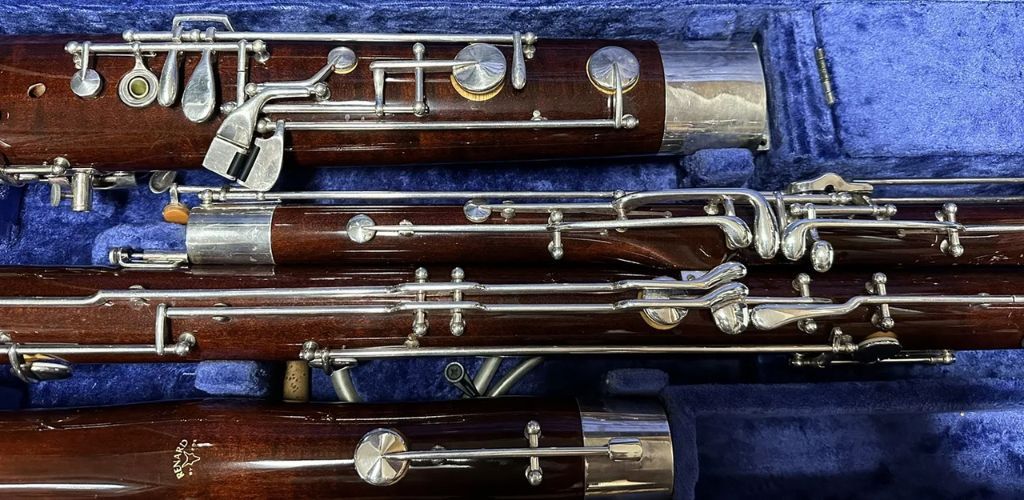
The Fox Renard Model 222 Student Bassoon – Full German System with High D Key features a durable polypropylene body and a full complement of German keywork, including a high D key, providing a rich, resonant tone and extended range.
Its precision key mechanism and ergonomic design make it an excellent choice for advancing students, offering both reliability and enhanced playability.
Fox Renard Model 222 Student Bassoon

FEATURES: Full German key system with silver-plated keys
OTHER INFO: German bell with an attractive synthetic-ivory ring
- Comes with a premium case with shoulder and backpack straps
- Higher compared to some entry-level student models
When you click ‘Check Price’, you’ll see there are loads of great places to buy this item. Our personal favorite is Sweetwater for the US, and Thomann and Gear4Music for the UK & Europe.
They are the largest music retailers, with excellent customer service, competitive prices, really fast shipping, and the longest guarantees.
The professional musician who wrote this article combined many things,
from the product build, manufacturer’s reputation through to feedback
from other users, to create our famous TedScore™.
Selmer 1432B Student Bassoon with Nickel-plated Keys
The Selmer 1432B Student Bassoon with Nickel-plated Keys features a durable polypropylene body and simplified keywork, ensuring ease of play and maintenance for beginners.
Its warm, resonant tone and robust nickel-plated keys provide reliable performance and longevity, making it an excellent choice for student bassoonists.
Selmer 1432B Student Bassoon with Nickel-plated Keys
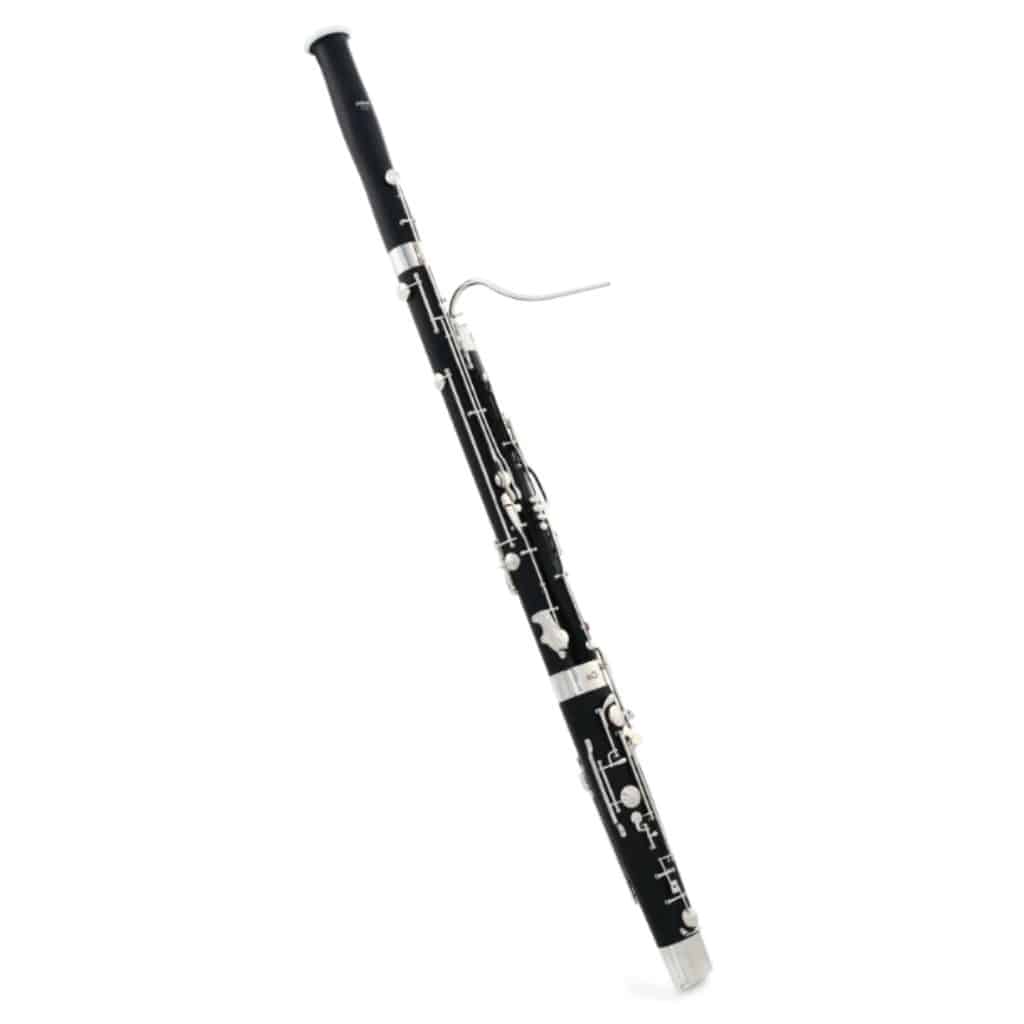
FEATURES: Resonate ABS body combines wood-like sonic qualities with improved durability.
OTHER INFO: Heckel key system with nickel-plated keys and kid leather pads.
- Includes 2 high-quality bocals and wood shell case
- It might have a different tonal complexity and projection than higher-end professional models.
When you click ‘Check Price’, you’ll see there are loads of great places to buy this item. Our personal favorite is Sweetwater for the US, and Thomann and Gear4Music for the UK & Europe.
They are the largest music retailers, with excellent customer service, competitive prices, really fast shipping, and the longest guarantees.
The professional musician who wrote this article combined many things,
from the product build, manufacturer’s reputation through to feedback
from other users, to create our famous TedScore™.
Top Bass Clarinet Brands
Selmer 1430LP Student Bb Bass Clarinet with Nickel-plated Keys

The Selmer 1430LP Student Bb Bass Clarinet features a durable plastic body and nickel-plated keys, offering a robust construction that can withstand the rigors of student use.
Its rich, resonant tone and precise intonation make it an excellent choice for beginners and advancing students seeking a reliable and high-quality instrument.
Selmer 1430LP Student Bb Bass Clarinet

FEATURES: Boehm system with 18 keys, including 7 covered finger holes; straight-cut toneholes.
OTHER INFO: Resonite ABS body and hand-hammered bell.
- Unique 2-piece body design for easy transport.
- Limited range compared to higher-end bass clarinets.
When you click ‘Check Price’, you’ll see there are loads of great places to buy this item. Our personal favorite is Sweetwater for the US, and Thomann and Gear4Music for the UK & Europe.
They are the largest music retailers, with excellent customer service, competitive prices, really fast shipping, and the longest guarantees.
The professional musician who wrote this article combined many things,
from the product build, manufacturer’s reputation through to feedback
from other users, to create our famous TedScore™.
Buffet Crampon 1195 Tosca Professional Low C Bass Clarinet
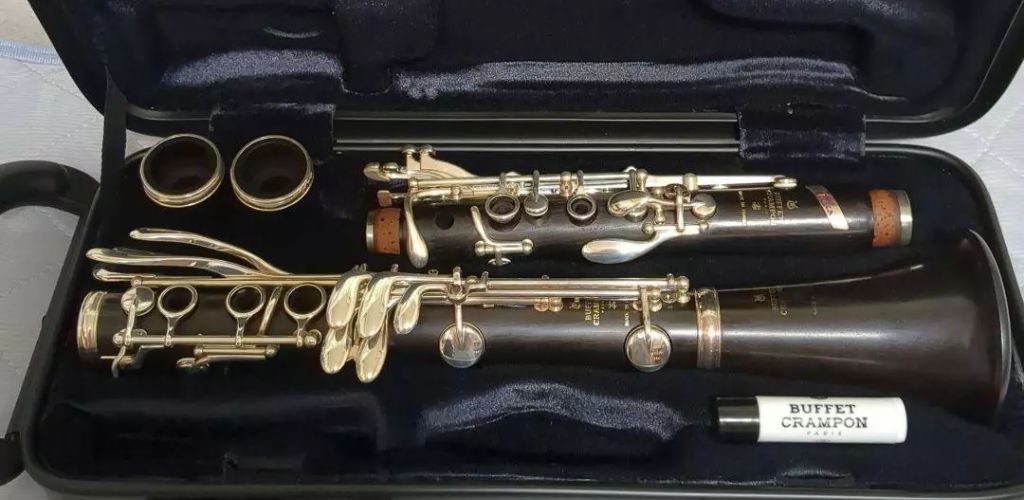
The Buffet Crampon 1195 Tosca Professional Low C Bass Clarinet features a grenadilla wood body and silver-plated keywork, delivering a rich, resonant tone with exceptional clarity and projection.
Its ergonomic design, precise intonation, and extended range to low C make it a top choice for professional clarinetists seeking superior performance and playability.
Buffet Crampon 1195 Tosca Professional Low C Bass Clarinet

FEATURES: Body made from select grenadilla wood.
OTHER INFO: Silver-plated bell and neck pipe.
- Includes premium Tosca bass clarinet case.
- Requires regular maintenance and care due to the wooden bod.
When you click ‘Check Price’, you’ll see there are loads of great places to buy this item. Our personal favorite is Sweetwater for the US, and Thomann and Gear4Music for the UK & Europe.
They are the largest music retailers, with excellent customer service, competitive prices, really fast shipping, and the longest guarantees.
The professional musician who wrote this article combined many things,
from the product build, manufacturer’s reputation through to feedback
from other users, to create our famous TedScore™.
Historical Context and Evolution
Let me take you on a delightful journey through time as we explore the fascinating history and evolution of two remarkable woodwind instruments: the bassoon and the bass clarinet.
Origins and Development

The bassoon made its grand entrance in the 18th century, its origins tracing back to earlier double-reed instruments like the dulcian. The bass clarinet, meanwhile, came into the picture in the 1850s, seeking to incorporate the bassoon’s compactness but with the clarinet’s successful mechanics.
I find it intriguing that the bass clarinet underwent a transformation, with its lower section bent upwards to create a more compact design. Yet, this early design slightly hindered its sound, which later improvements thankfully rectified.

Bassoon vs bass clarinet:
A Recap

When I think about the bass clarinet and bassoon, I’m amazed at how they bring such different sounds to music. Deciding between the two, the bass clarinet might be more accessible for beginners, while the bassoon offers a more challenging journey.
The bass clarinet has a warm, cozy tone that’s easy for beginners to start with and can fit into all kinds of music.
The bassoon has a unique, quirky sound that takes some effort to master, but the payoff is worth it. It’s heavier and needs more physical work, like a musical workout!
I love how both instruments bring depth and character to a symphony, playing essential roles and telling their own stories. They’re both fantastic in their ways and deserve applause for their contributions to music.
Here’s to the bass clarinet and bassoon; may they keep delighting us for years!
Wait a second, more insights follow…
Discover the 11 must have accessories for woodwind players who need a seamless and enjoyable musical experience.
FAQ's
The bassoon is often considered one of the more challenging instruments to play due to its complex fingering, unique embouchure, and demanding breath control, but the level of difficulty can vary depending on individual aptitude and experience.
The difficulty of playing the clarinet versus the bassoon can vary based on individual preferences and skill levels. The clarinet is generally more accessible for beginners due to its simpler embouchure and fingerings, while the bassoon’s unique embouchure, fingerings, and breath control may present more demanding challenges.
Switching from clarinet to bassoon can present challenges due to the differences in embouchure, fingerings, and breath control, but with dedication and practice, many musicians successfully make the transition.
The bass clarinet can present unique challenges compared to the regular clarinet due to its larger size, lower register, and differences in fingering and embouchure.











Many people believe that the bass clarinet is easier than the soprano clarinet. The keys are larger, which means the fingers are less cramped than they would be on the soprano clarinet. The two instruments have mostly the same fingerings.
Canceled.